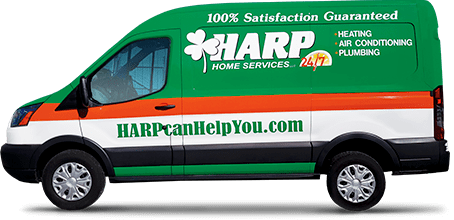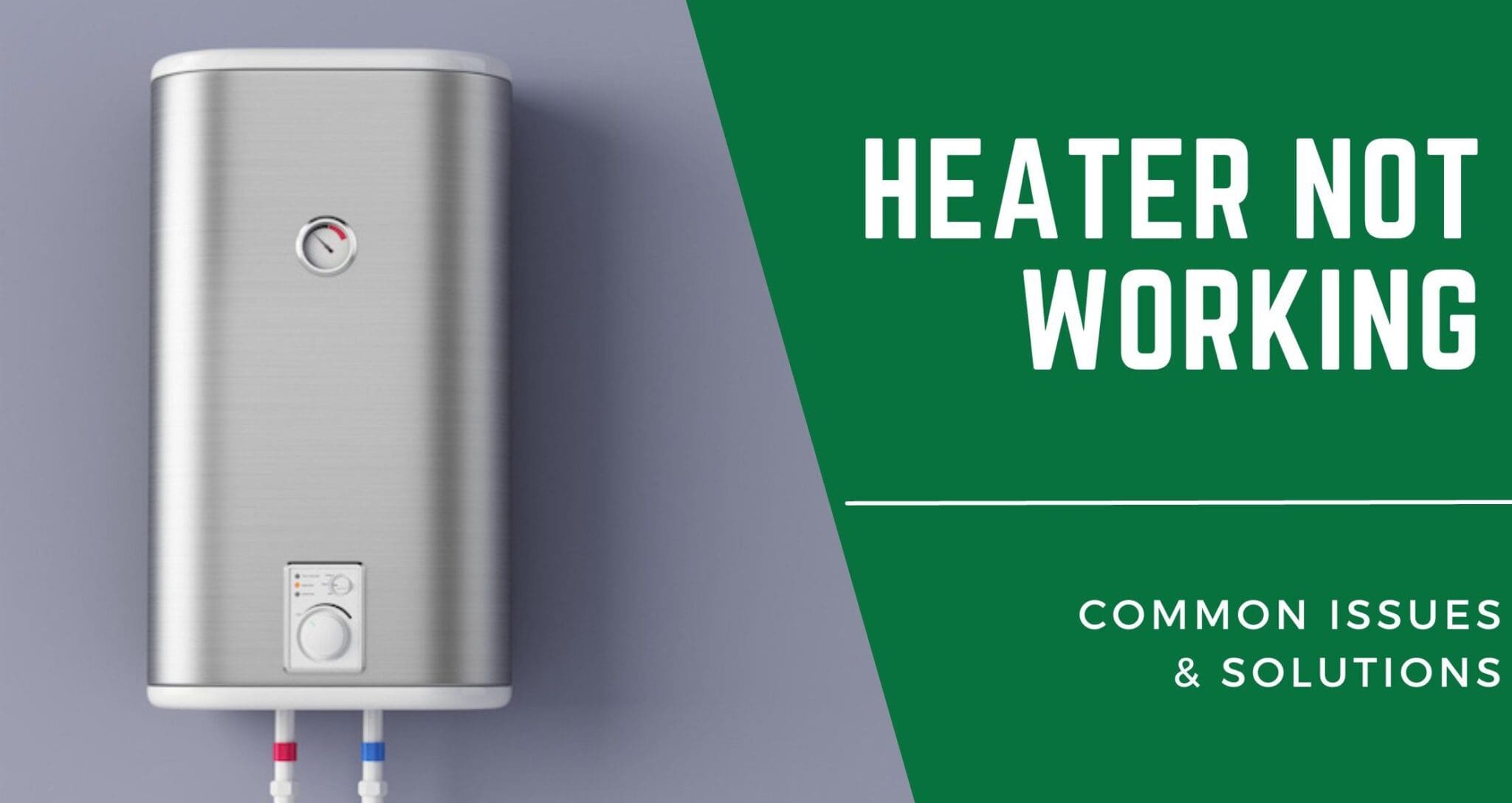
As winter’s chill sets in, the last thing you want to encounter is a heater not working. We get it—the frustration, the discomfort, and the urgency to find a solution. That’s why you can count on HARP Home Services, Connecticut’s trusted HVAC professionals, as your go-to source for all things heater repair.
In this comprehensive guide, we’ll dive into the common issues that lead to heat not working in house and offer expert advice on troubleshooting and heater repairs. Whether you’re wondering, “Why is my heater not working in my house?” or you’re seeking reliable heater repair, you’re in the right place.
Why Is My Heater Not Working? 5 Common Issues
The frustration of a heater not working can quickly turn your cozy abode into an icy challenge. Let’s look into the most common issues that may be causing your heater to falter, urging you to diagnose and address the problem so your home stays comfortably warm when you need it most.
1. Electrical Issues

The electrical system is one of the most overlooked culprits when your heater isn’t working. A tripped circuit breaker, malfunctioning thermostat, or even a simple power switch turned off can all lead to heating failure.
Before diving into more complex troubleshooting, check these basic electrical components.
Ensure the thermostat is set to “heat” and verify that the circuit breaker hasn’t tripped. These simple checks can often save you time and unnecessary stress.
2. Thermostat Malfunction
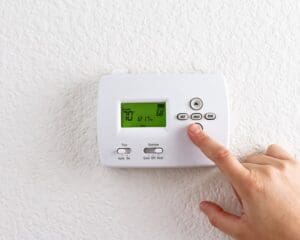
A faulty thermostat can be a silent saboteur regarding heating issues. The thermostat should be your first inspection point if your heater isn’t responding.
Ensure it’s set to “heat,” and try raising the temperature a few degrees to see if the system kicks in. Also, don’t overlook the basics—check for low batteries or loose wiring. Sometimes, a simple reset can resolve the issue, restoring your home’s warmth without professional intervention.
3. Clogged Air Filters
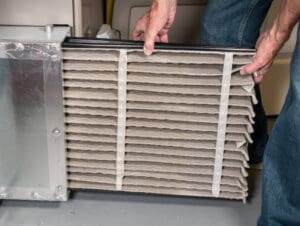
The importance of a clean air filter can’t be overstated when it comes to a well-functioning heating system. A clogged or dirty filter restricts airflow, causing your heater to work harder and less efficiently. Over time, this can lead to overheating and system shutdown.
Make it a habit to check your air filter regularly, especially during the winter months. A simple filter replacement can often be the quick fix that restores your heater’s performance.
4. Blocked Vents and Ducts
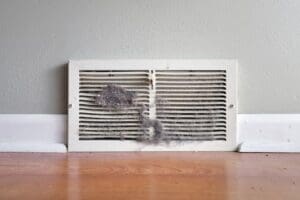
Obstructed vents and ducts are silent efficiency killers in your heating system. When airflow is restricted, your heater struggles to distribute warm air evenly throughout your home, leading to cold spots and increased energy bills.
Take a moment to inspect all vents and duct openings for obstructions like furniture, curtains, or debris. A thorough cleaning can also remove dust and dirt accumulating over time, enhancing your system’s overall performance.
5. Component Failure
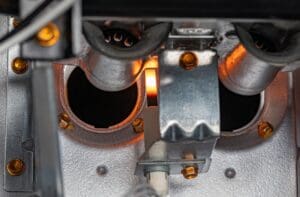
In some cases, the issue may lie deeper within the heating system, involving the failure of internal components.
These issues require immediate attention, whether it’s a malfunctioning blower motor, a faulty ignition system, or a compromised heat exchanger. While some signs of component failure can be subtle, such as unusual noises or reduced heating efficiency, they can escalate quickly, leading to a complete system breakdown. Identifying and addressing these issues promptly is crucial to avoid more costly repairs.
Heat Not Working In House: Troubleshooting Steps
When your heater fails to deliver that much-needed warmth, it’s more than an inconvenience—it disrupts your home’s comfort and safety.
Here are some essential troubleshooting steps, prompting you to identify common issues and take appropriate action, whether that means a quick DIY fix or calling in the professionals.
1. Check the Power Supply
It may sound elementary, but many heating issues stem from a simple lack of power. Before diving into more intricate troubleshooting, ensure that the power supply to your heating system is active.
Check the main electrical panel for tripped breakers or blown fuses, and ensure the power switch near the furnace is in the “on” position. These initial checks can often resolve the issue without further intervention. However, if you need electrical repair services, contact HARP Home Services ASAP.
2. Check and Reset the Thermostat
When your heater isn’t performing as expected, revisiting the thermostat settings can offer a quick solution. Make sure it’s set to “heat” and not accidentally switched to “cool” or “off.”
If you’re using a programmable thermostat, confirm that the schedules align with your current needs. Sometimes, a simple reset can recalibrate the system and resolve minor glitches.
Follow the manufacturer’s instructions to reset, which usually involve removing the batteries or pressing a dedicated reset button.
3. Check the Pilot Light and Ignition Switch
The pilot light and ignition switch are critical components for those with gas heating systems. If your heater isn’t firing up, checking whether the pilot light is on is essential.
A blown-out pilot light can be easily relit following the manufacturer’s guidelines. Similarly, the ignition switch should be in the correct position to initiate heating.
If you notice frequent issues with the pilot light or ignition, it may signal a deeper problem requiring further investigation.
4. Check and Clean Air Filters
Air filters are pivotal in maintaining your heating system’s efficiency and longevity. Over time, these filters can accumulate dust, pet dander, and other debris, leading to restricted airflow and reduced heating effectiveness.
Make it a routine to inspect your air filters at least once a month. If they appear dirty or clogged, clean or replace them entirely. This simple maintenance step can significantly improve your heater’s performance and lifespan.
If all troubleshooting efforts prove futile and your heater remains unresponsive, it’s time to consider a more intricate possibility: component failure. Complex issues like a malfunctioning blower motor, ignition system, or a compromised heat exchanger can be challenging to diagnose and repair without professional expertise.
In such cases, it’s wise to schedule a heater repair with a trusted HVAC service provider like HARP Home Services, known for their reliable solutions in Connecticut.
When to Seek a Professional
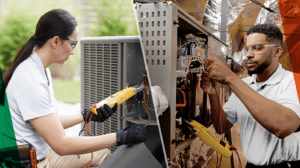
While DIY troubleshooting can resolve many common heating issues, there are instances when professional intervention becomes not just advisable but necessary.
Complex problems like component failure, persistent electrical issues, or recurrent pilot light outages often require specialized tools and expertise for a safe and effective fix.
If you’ve exhausted your troubleshooting options and your heater is blowing cold air, it’s time to consult a trusted service like HARP Home Services that can offer the expertise and peace of mind you need to restore your home’s comfort.
Conclusion
Navigating the maze of a furnace not blowing hot air can be daunting. Still, armed with the proper knowledge, you can often pinpoint and resolve issues without breaking a sweat.
Many solutions are within your grasp, from checking electrical components to inspecting air filters. However, when the problem transcends DIY capabilities, seeking professional help is crucial.
HARP Home Services is a reliable option for those in Connecticut, offering expert heater repair right in your neighborhood. Remember, a well-maintained heating system isn’t just about comfort; it’s about safeguarding your home’s warmth and well-being.


